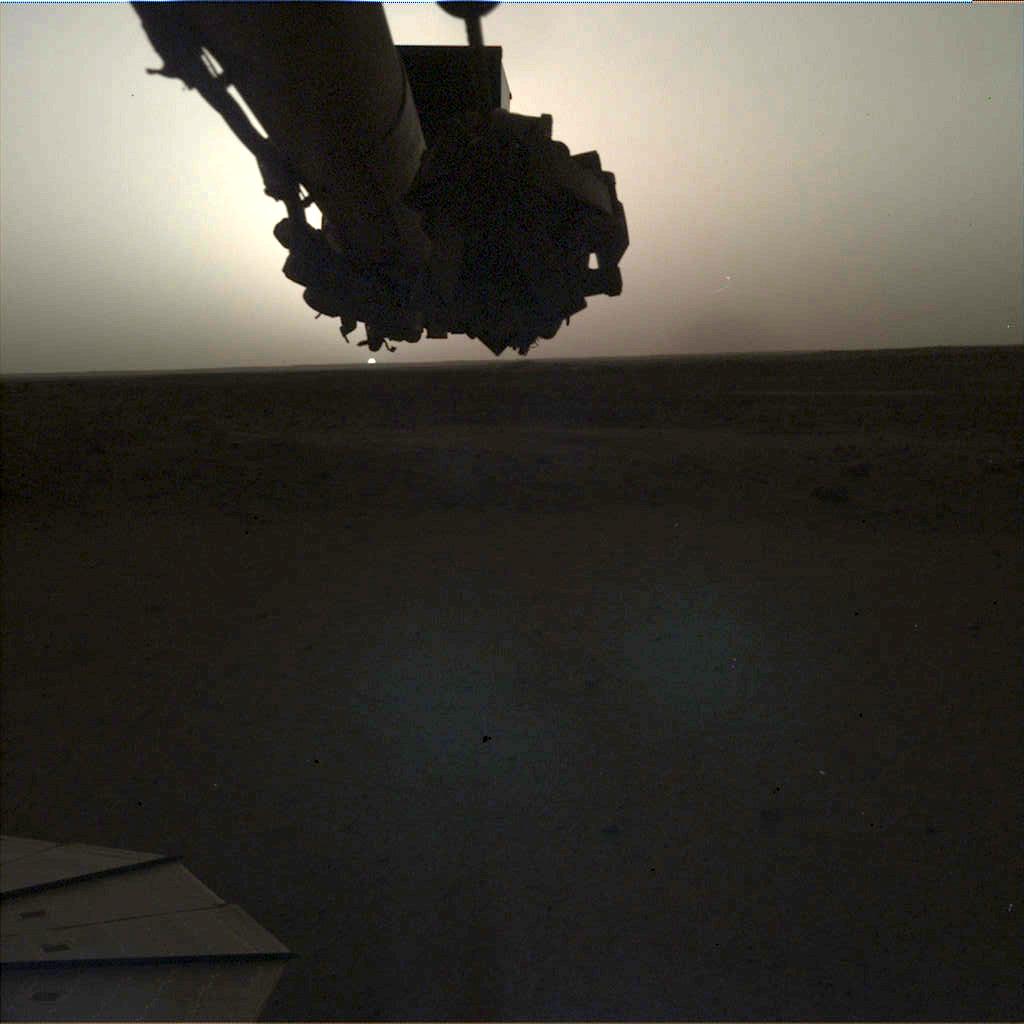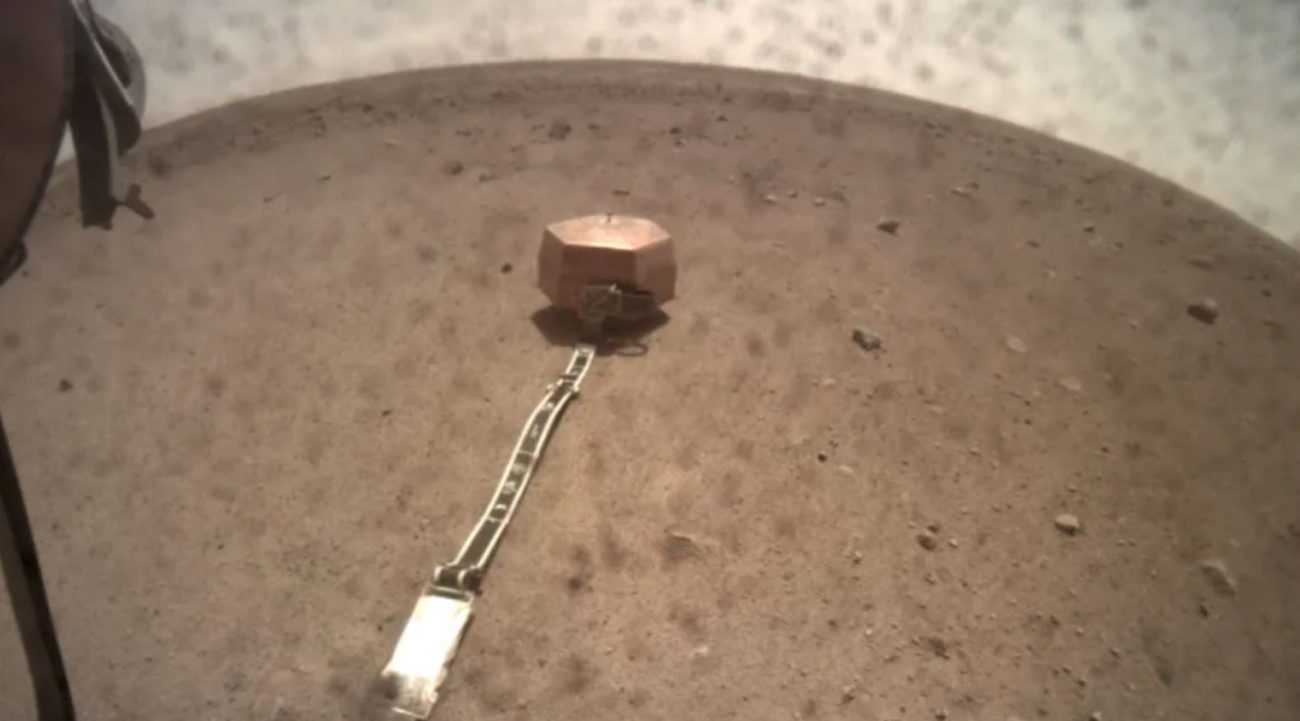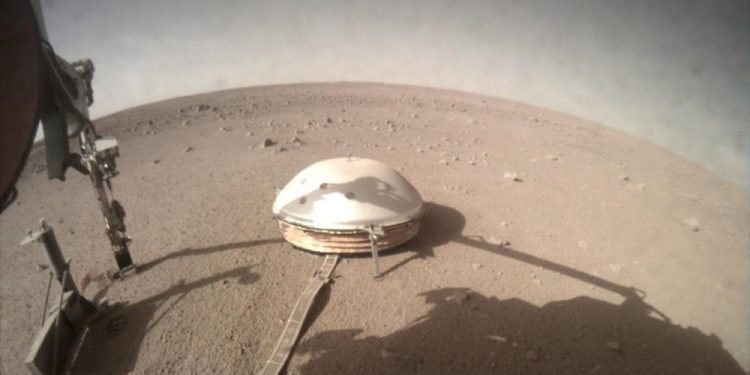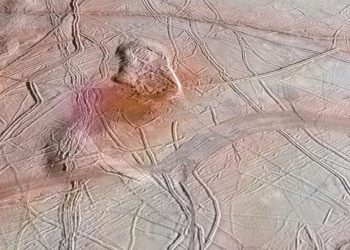Since it landed on the red planet in November 2018, NASA’s InSight mission has detected more than one thousand Marsquakes successfully. The lander has offered us unprecedented insight into Mars. InSight has spent more than four years on the Martian surface.
The mission has rewarded us with various symphonic sounds on Mars. NASA has captured – thanks to the spacecraft’s exquisitely sensitive seismometer – a series of “curious sounds” on Mars, as heard in some of the audio recordings that NASA recently published. The Seismic Experiment for Interior Structure (SEIS) instrument was built to pick up different vibrations that may appear subtly as a simple breeze on Mars.
Unprecedented insight

Some of the sounds captured by the InSight mission correspond to Marsquakes and wind gusts on Mars. The sounds have been modified and adjusted by scientists so that the human ear can hear them. InSight’s seismograph is capable of recording sound waves such as those produced by gusts of wind or even by the movements of the robotic arm of the probe and other mechanical tools.
Never before were scientists able to hear what’s going on on Mars. Numerous past rover missions have offered an unprecedented view of the Martian landscape. But up until InSight made its way to the surface of Mars, we weren’t really able to hear what Mars sounds like.
“It’s been exciting, especially in the beginning, hearing the first vibrations from the lander,” said Constantinos Charalambous, an InSight science team member at Imperial College London who works with the SP sensors. “You’re imagining what’s really happening on Mars as InSight sits on the open landscape.”

Most of the data InSight was sent to gather is related to quakes. Unlike on Earth, Marsquakes are caused by cooling and contraction, which results in stress fractures on the Martian Crust. Since Mars has a cratered surface, quakes on the red planet can persist for about a minute. In comparison, quakes on Earth last for seconds at a time. During the day, InSight’s different parts are in movement. They also produce sounds.
In addition to that, the seismometer also picks up wind gusts. This means that to hunt for quakes, researchers listen for changes in the instruments during the night. In addition to hearing quakes and wind gusts on Mars, the InSight instruments have picked up a series of strange changes. A weird whistling noise can be heard from Mars’s surface in one of the recordings. Although scientists don’t know exactly what causes it, they believe the noise was produced due to interference with the seismometer’s electronics.
The InSight lander has also recorded its own unique sounds. Researchers at NASA refer to them as dinks and donks, and these peculiar sounds are caused due to the expansion and contraction of the various parts inside the seismometer. These changes within the instrument are most likely caused due to heat loss.
Eerie sounds on Mars
Check out some of the strangest noises picked up by InSight on Mars here below. Here’s the first quake on Mars recorded by the InSight lander (at the start of the recording; what you will hear is the wind on Mars):
This is the recording of another quake on Mars:
Here’s another noise picked up on Sol 235 on Mars:
Here are some of the sounds that the lander produces when it is working on the surface of Mars:
And in this recording below, you can hear the various “dinks and dongs” the lander produces:
Here is an extra recording. In the audio track below, you’ll hear sounds from InSight’s Pressure Sensor on Mars:
InSight, whose solar panels are covered in think layers of Martian sand is no longer operating on the surface of Marts. However, the plethora of scientific data it has gathered during its mission on Mars has helped us to redefine our knowledge of the red planet.
As scientists recently said, “the goal of the InSight mission was to rewrite the textbooks. We have done it, literally.” This is because the lander has provided scientists on Earth with unprecedented data that has helped us understand the red planet inside out. InSight exceeded its expected lifespan of two years, but dust buildup on its solar panels depleted the spacecraft’s energy, rendering it silent. Despite several attempts, NASA officially ended the InSight mission in December 2022.
Join the discussion and participate in awesome giveaways in our mobile Telegram group. Join Curiosmos on Telegram Today. t.me/Curiosmos











